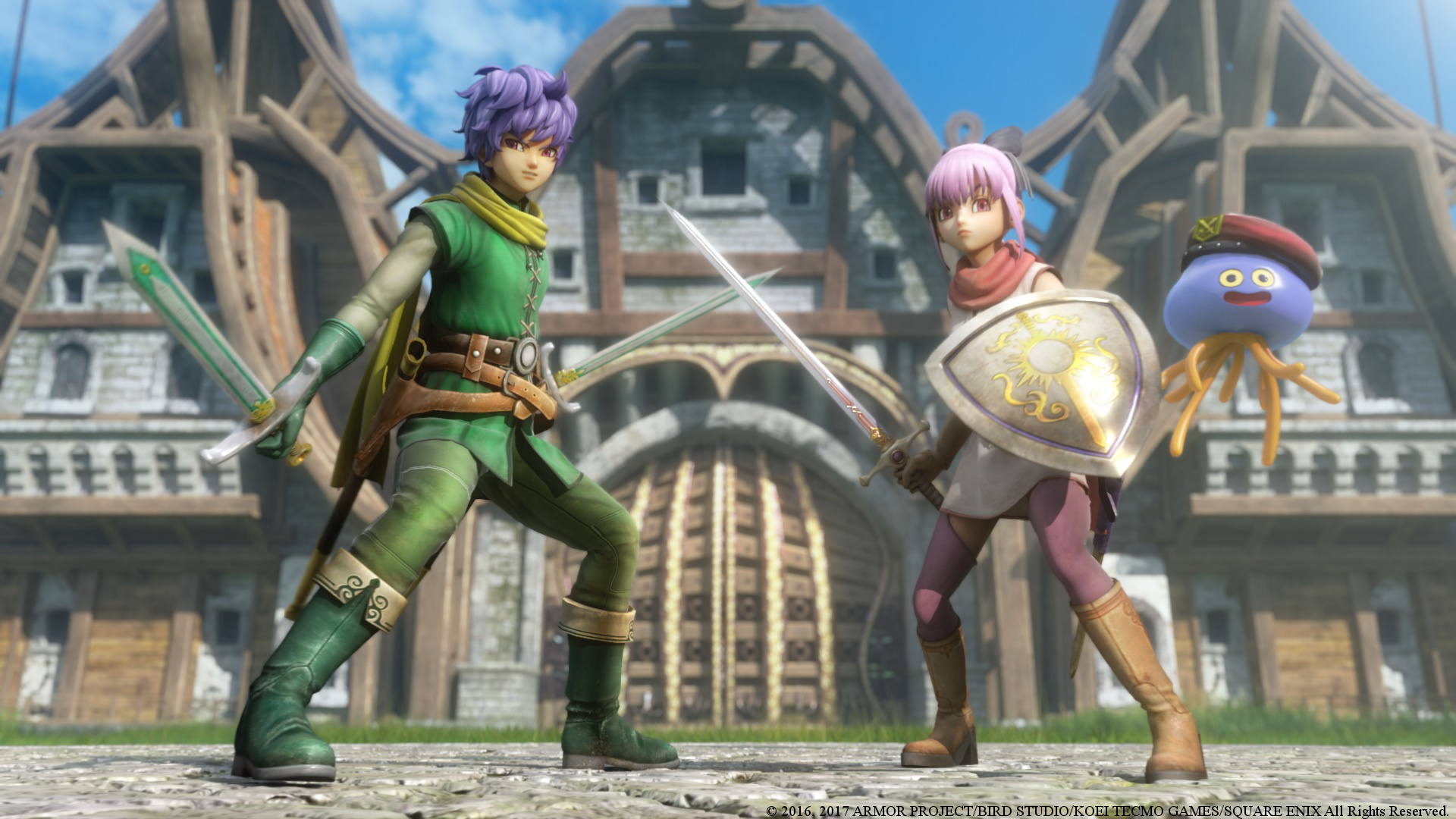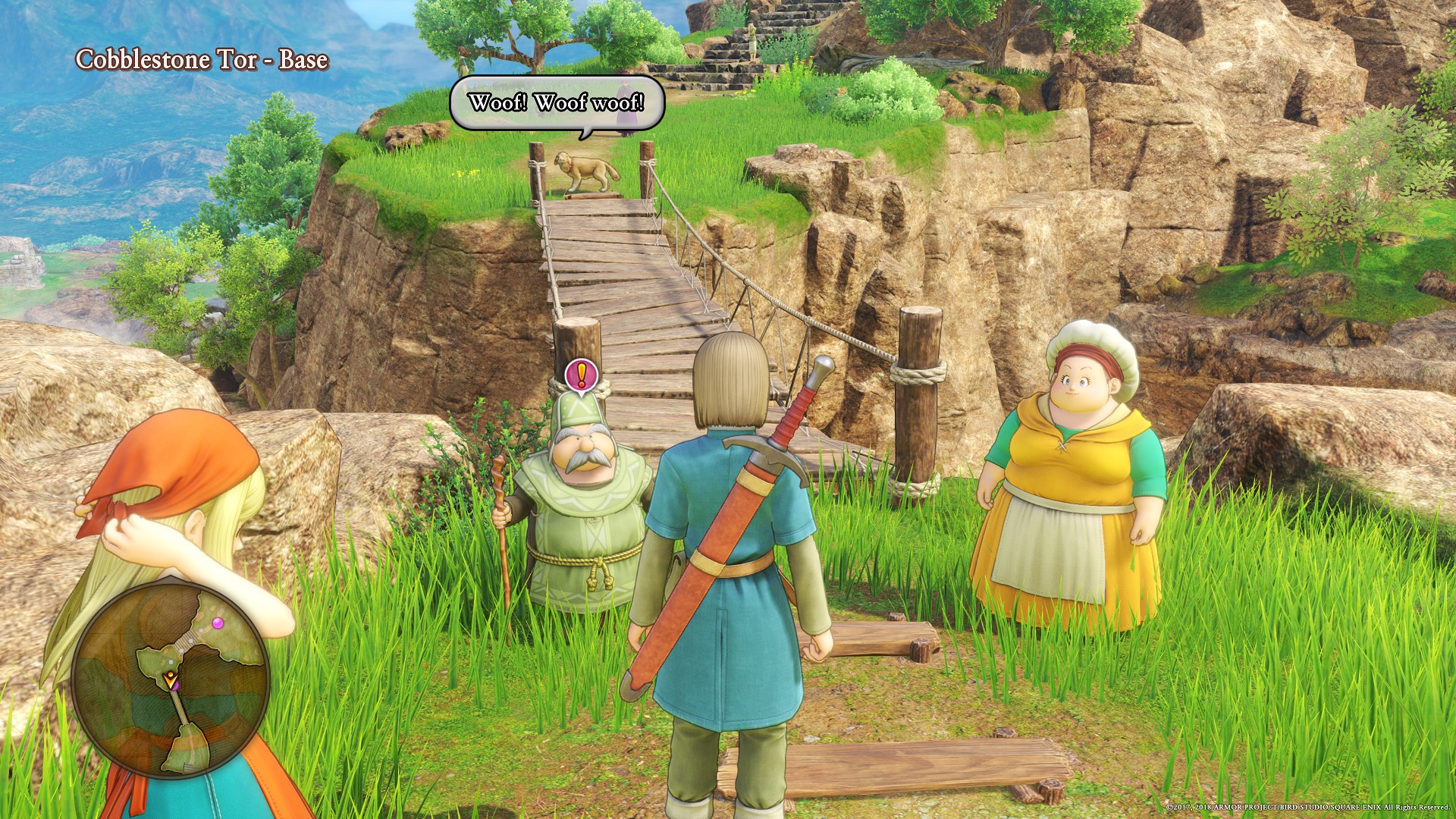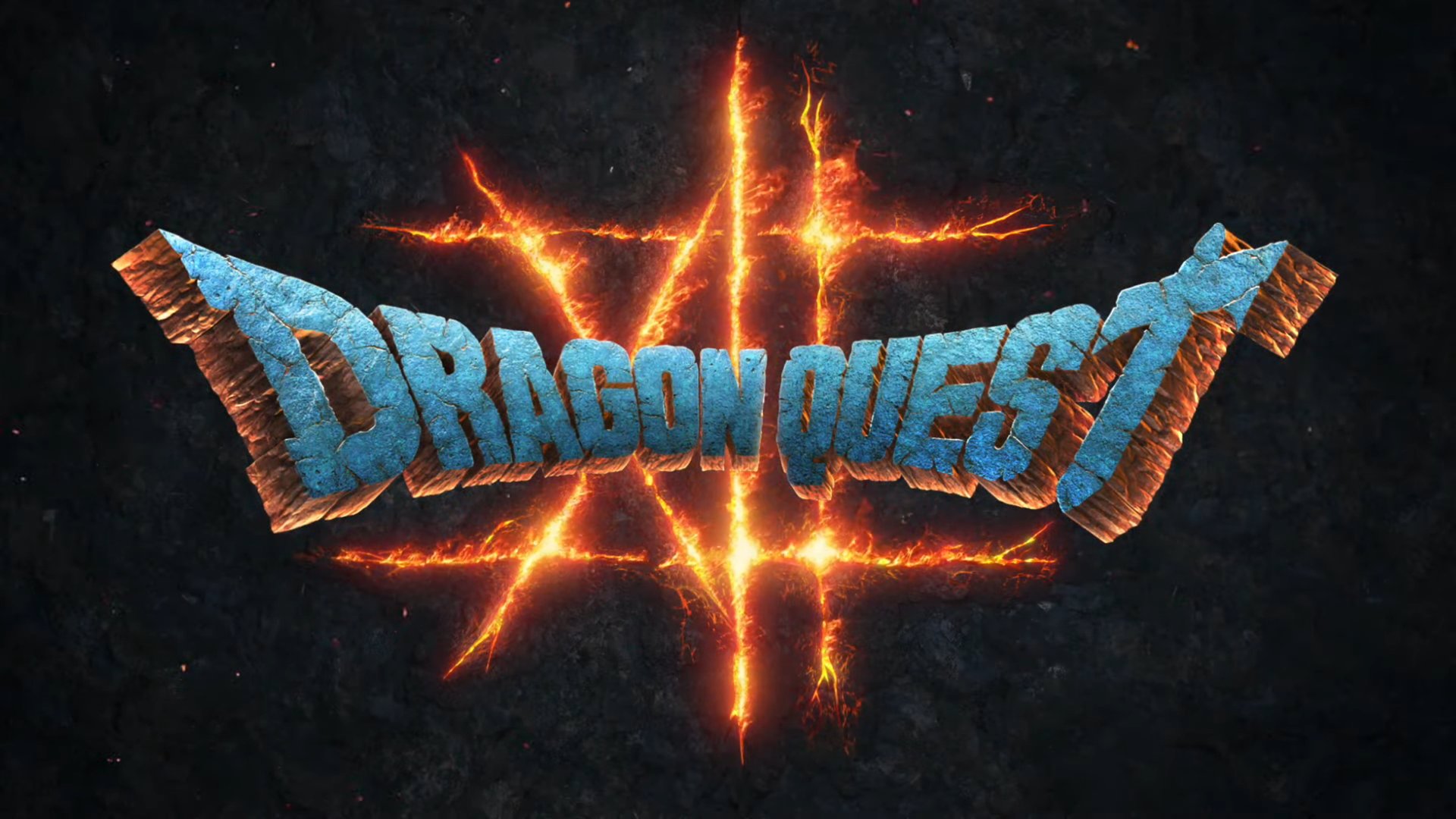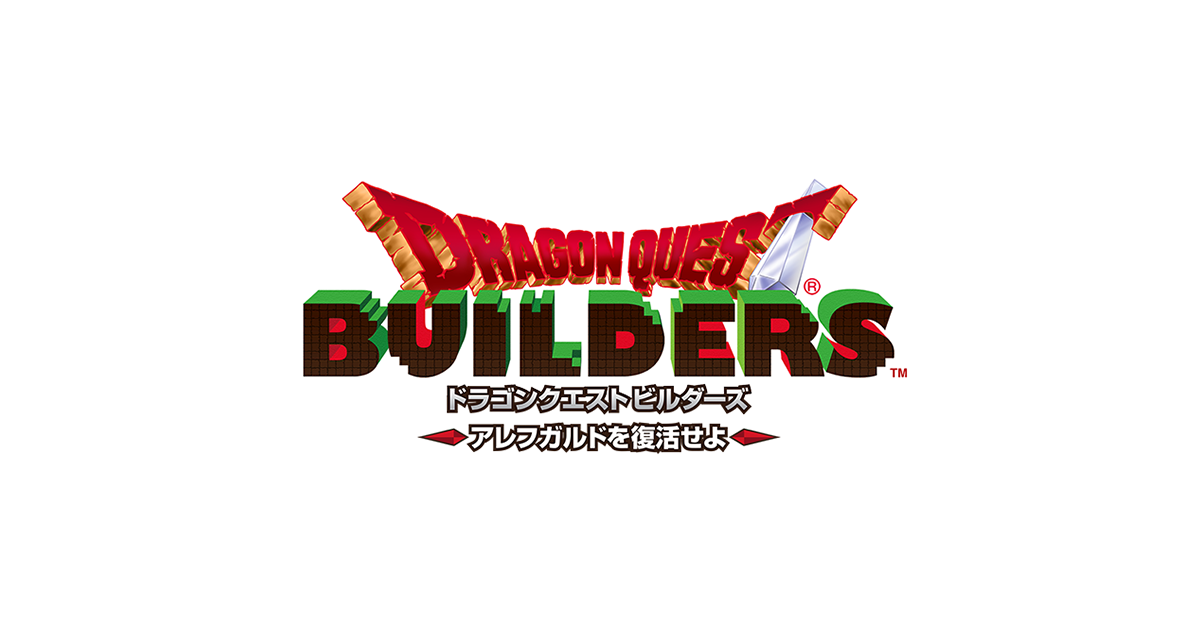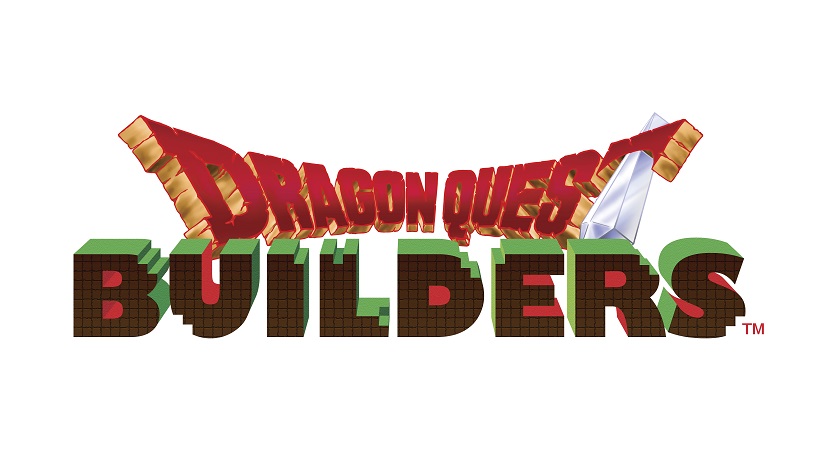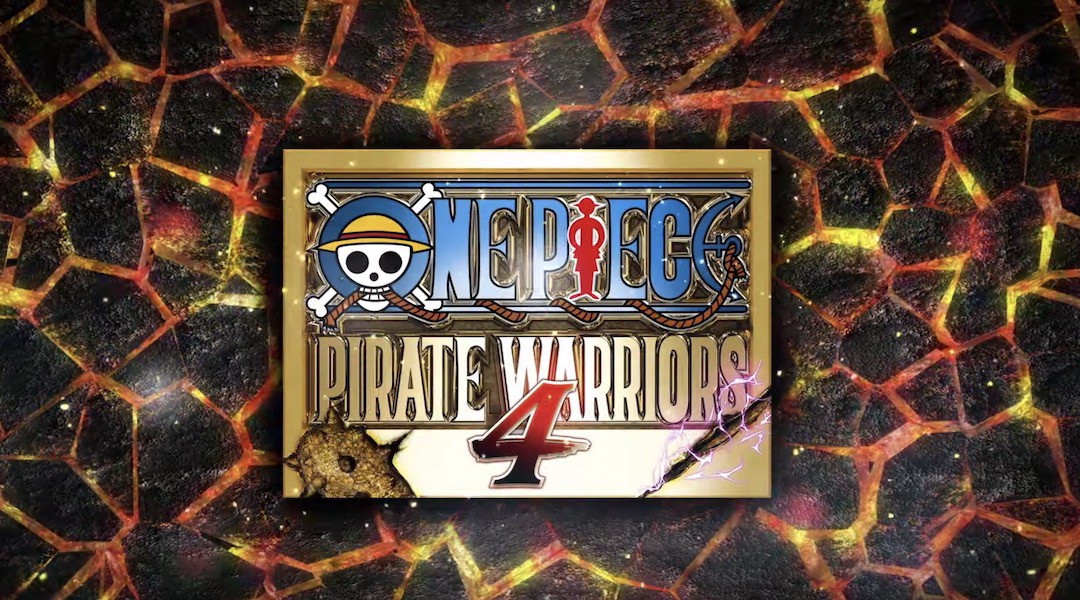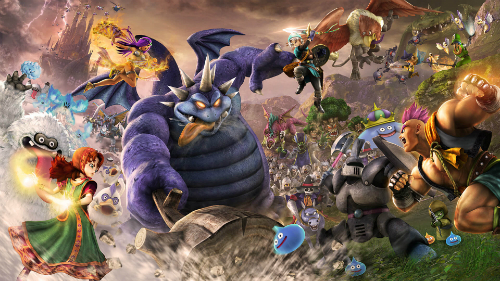
Over the last eight or so years, developer Omega Force have been slowly expanding the reach of their Dynasty Warriors franchise by incorporating the series’ trademark hack-and-slash gameplay with other properties. To name a few we’ve seen Gundam, One Piece and The Legend of Zelda all meshed with the Warriors gameplay which has achieved various levels of success. In 2014 it was Dragon Quest’s turn to receive the treatment, and following strong sales Square Enix saw fit to order a sequel. Dragon Quest Heroes II doesn’t stray too far from its predecessor, only implementing a few improvements here and there, but it should still appease Dragon Quest fans.
The Dynasty Warriors games aren’t exactly known for their groundbreaking storytelling, but Dragon Quest Heroes II offers a simple yet engaging enough plot that is kept at the forefront through regular conversations between characters and cutscenes. Players can choose between Lazarel or Teresa, cousins who live in a quiet, peaceful kingdom. During dinner one evening the kingdom is attacked, and the duo find themselves swept into the conflict and must discover what provoked the sudden threat.
Unlike most other Warriors-inspired titles, Dragon Quest Heroes II has a heavier focus on RPG elements. For starters, the game is set in an open world environment instead of just throwing you into a random battlefield. Areas are broken up into Wild Zones which offer exploration opportunities such as uncovering chests and completing side quests, and War Zones which focus on the classic hack-and-slash gameplay. Some of the environments you will explore include townships (the main hub area), fields, swamps and deserts, offering some variety to the scenery and also influencing the type of monsters that appear. For example, the desert area includes rock boulder and mummy monsters, while in the fields you’re more likely to encounter low level Slimes.
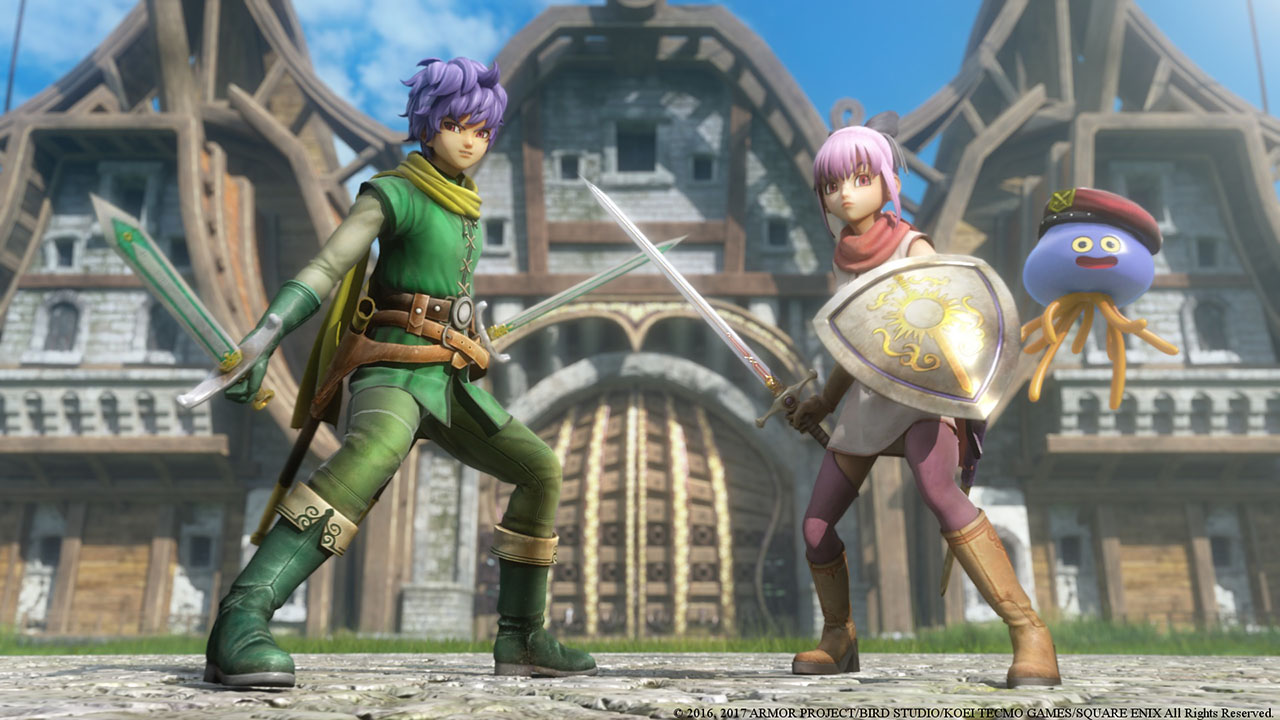
The Wild Zones, unfortunately, can feel a bit bland. While there are side quests, these usually just entail collecting items for someone, collecting a bounty by defeating a specific monster or rescuing an individual. You also have the option to fight swarms of monsters throughout the Wild Zone, but apart from gaining experience and some extra money it feels more like an unnecessary grind than a compelling part of the game. It’s fun and engaging for the first few hours, but ultimately there isn’t enough variety to keep you interested for long.
War Zones are more focused on hack-and-slash combat but also contain side objectives such as protecting an NPC, navigating a maze with trapdoors and overcoming enemy ambushes. It’s here that boss battles take centre stage and offer some unique encounters. Bosses are often giants compared to the playable characters, so naturally they present a bigger challenge as you dodge their attacks and slowly chip away at their health. Unfortunately bosses have the tendency to focus solely on the human controlled player, which feels like a cheap way of making the battles tougher. Even as you switch between party members the boss doesn’t miss a beat, which can get frustrating if you’re trying to cast spells or change tactics.
If you’ve played Dynasty Warriors before, you will know a lot of the series’ appeal comes from mindlessly hacking away at hundreds of enemies at once. Yet the monsters in Dragon Quest Heroes II don’t quite reach the same levels of insanity – after moving just a few feet away, monsters turn around and give up pursuing you. This makes it difficult to round up large crowds, and as such you lose a little bit of the fluidity that makes Dynasty Warriors so satisfying. Indeed, much of the novelty here relies on your familiarity of the Dragon Quest games and getting a kick out of at seeing beloved characters share a gigantic battlefield. However this quickly wears thin due to repetition, so it’s only going to be the fans that get the most enjoyment out of the title.
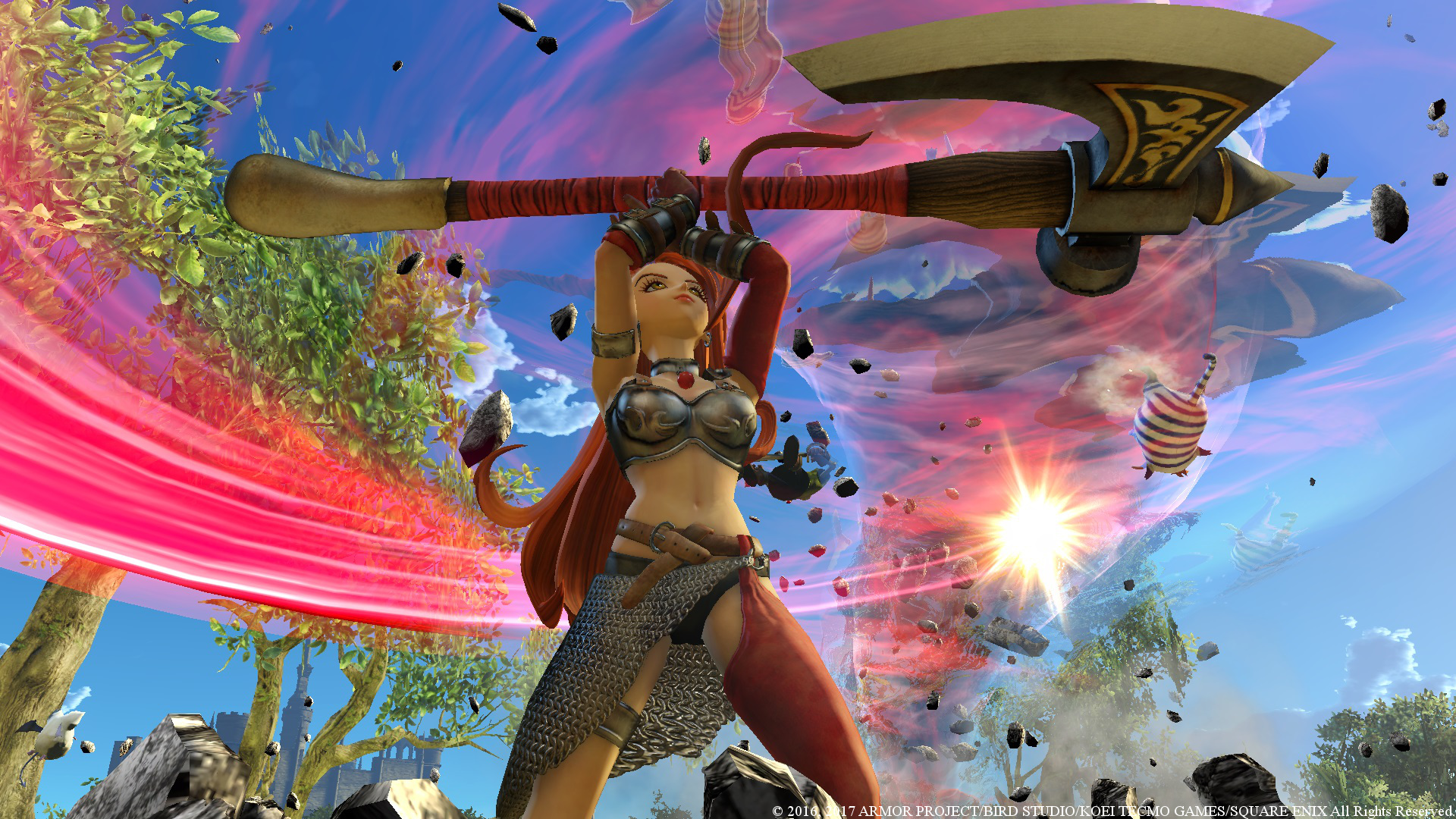
Combat is straightforward and accessible to most players. You have strong and normal attack buttons which you string together to unleash various combos, as well as block and dodge maneuvers to defend against trickier enemies. There’s also a Tension Meter which is the game’s equivalent of Dynasty Warriors’ Musou Gauge – every time you receive or give damage this slowly fills, and once full you can activate it to become invincible and unleash a barrage of high-powered attacks for a short time. One of the more unique traits of Dragon Quest Heroes is the ability to cast spells and special attacks, which is a simple but welcome feature that helps differentiate the combat from other titles.
The Monster Medal system also returns – in the first game defeated foes would occasionally drop medals that, when collected by players, would allow you summon them onto the battlefield to fight on your side. This time however, some medals will temporarily transform you into the creature, providing a unique twists. Using the golem medal, for example, lets you rampage as the hulking beast and crush anything that stands in your way. It’s oddly satisfying and further helps establish Dragon Quest Heroes as its own series. Dragon Quest fans in particular will love finally being able to control some of the classic enemy variations.
Continuing with the RPG elements, players will be able to create parties of four characters. During battles you can freely switch between the characters, so you ideally want party members who are equipped with different weapons and abilities. Similar to Dynasty Warriors 7 and later entries, a big focus of the game is to assign different weapons to characters. Most are compatible with two or more different weapon types, and it’s largely going to come down to your prefered playstyle. For example, the twin sword weapon is designed for quick, successive strikes which slowly deplete an enemy’s health, while the axe weapon is slower to use but balances this with higher damage. It’s a lot of fun to experiment with the different weapons and offers a little more variety to the otherwise repetitive gameplay.
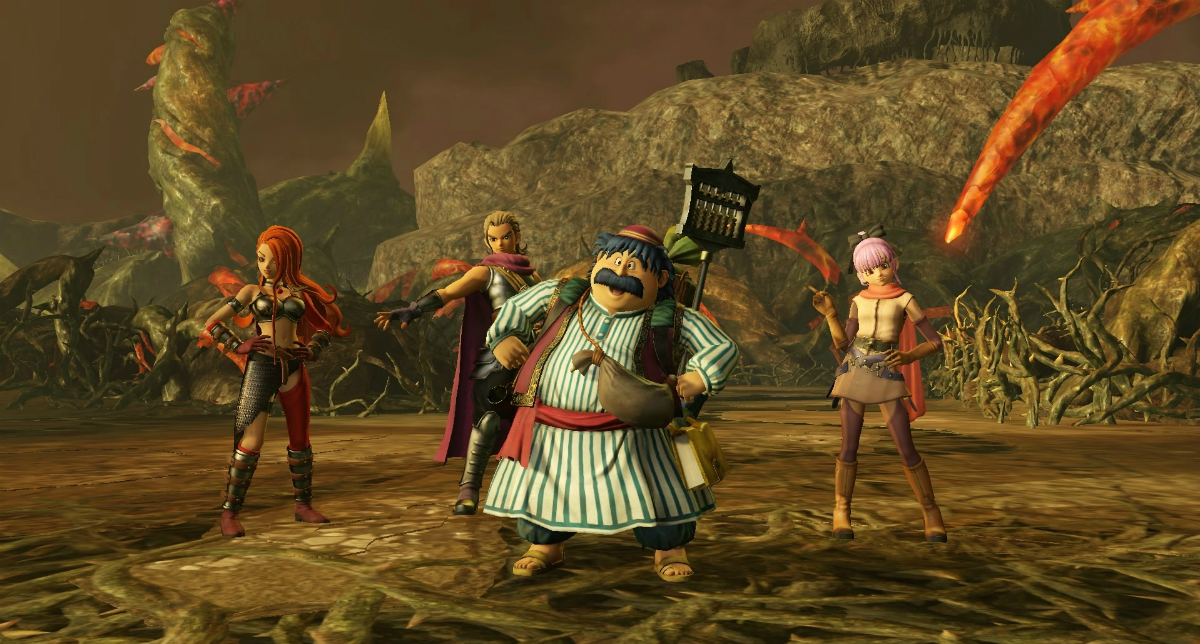
There are also plenty of ability and skill trees. Players can add and switch up to four abilities per character, including special attacks and spells which heal teammates. Skill trees will generally affect the immediate character only, increasing stats such as health, strength and the duration of the tension metre.
Being a Dragon Quest title, it’s not too surprising that the game boasts colourful environments and enemies. Environments can look a little dull at times and lack any appealing aesthetic objects, but the monsters themselves look great and have charming animations. Of particular note is the development team’s great job at localisation – there’s a lot of humour and light hearted moments in the script, and the voice acting matches the characters’ personalities perfectly. It’s something Omega Force isn’t known for, particular when translating titles for the Western markets, so it’s great to see and will easily put a smile on your face. There’s also plenty of fan service, with sound effects and scores being pulled from the Dragon Quest franchise and utilised to recreate its universe.
While the game’s repetition and AI programing can make it a little less than desirable, Dragon Quest Heroes II will easily appeal to fans. It takes a lot of foundations from the first Heroes title and adds to them, establishing the games as their own series. The localisation has also been thoughtfully implemented, which goes a long way in adding appeal. If you’re not familiar with the Dragon Quest franchise then you need not apply.
- Further establishes Dragon Quest Heroes as its own series - Fun to experiment with different weapons - A lot of fan service
- Repetitive gameplay - Bosses target the human player and ignore other party members - Difficult to horde enemies

